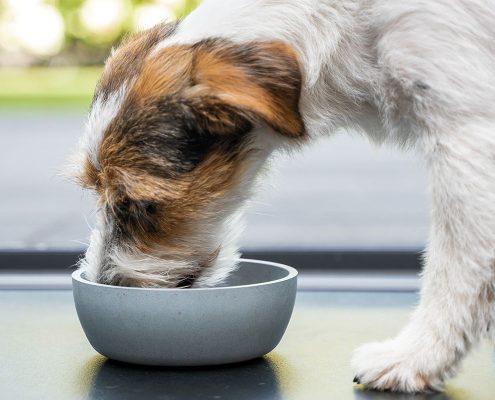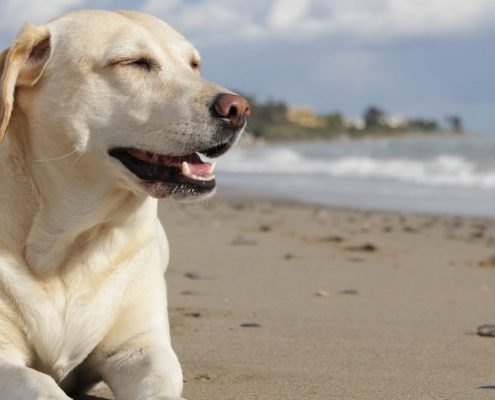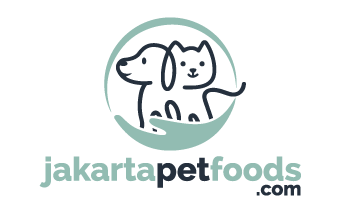What is in your cat or dog food? |
What does the text on packaging actually mean?

What does the text on packaging actually mean?
What is in the diet of your dog or cat? You may be feeding your dog or cat a kibble with chicken. Do you know how much chicken is in the food? For example, is “enriched with” better than “rich in”? We are happy to explain what those texts on the packaging mean.
Manufacturers often use so-called nutrition claims on a package to indicate that a food has a certain taste or contains a certain ingredient. Those claims are bound by rules.
Which statements you can make as a manufacturer on a package depends on how high the percentage of the ingredient in the food is. The manufacturer must therefore state the ingredient and percentage in the composition on the packaging. Would you like to claim “Rich in chicken!” on the package? This is only allowed if the food contains more than 14 percent chicken and the manufacturer states this in the product composition on the packaging as well.
Below is how much of an ingredient in a dog or cat food is a must to have if you want to use any of these claims:
And of course, if the producer claims a diet to have 100 percent of something, it must also be 100 percent.
‘Enriched with’? That sounds good, but this means that there is less than 4 percent of that ingredient in the diet. If you are looking for a food with a lot of chicken and think that a food “enriched with chicken” contains a lot of chicken, you are wrong: it is something different for at least 96 percent.
A diet “enriched with chicken” consists at least of 96 percent of other (non-chicken) elements.
The fact that there is “only” 4 percent of an ingredient in a diet does not automatically mean that it is not good. For some ingredients you may only need very small amounts for the desired effect. For example, the in other countries sold Prince NatureCare Turkey cat foods are “enriched with rosemary”, which contributes to the immune system. This means contains the food contains less than 4 percent rosemary. In fact, there is only 0.1 percent rosemary in this food. Yet this is exactly enough to: a.) let this ingredient do its work, and b.) ensure that the food does not taste too strong, to prevent cats from not enjoying the taste of their food anymore.
The ingredient which is most present in the food is listed first in the composition on the package. In the Prins ProCare Super Active, for example, pressed chunks of poultry (chicken and turkey) form the number 1 ingredient with 25 percent. A diet with a high content of animal ingredients is not necessarily a better pet food. Moreover, to ensure that a kibble becomes and remains a kibble, carbohydrates such as from grains and vegetables are always required for the binding. Yet many pet owners seek for pet food with the first mentioned ingredient being an animal protein source, such as chicken or beef.
When choosing the diet of your dog or cat, it is important to look closely at the total product, and not blindly focus on the meat content or certain ingredients. It is important to give a balanced diet to your pet, and what exactly your dog or cat needs, differs from pet to pet.
There are several ways to include meat as the main ingredient on the packaging. For example, instead of one carbohydrate source, you can choose multiple carbohydrate sources, each of which is less present in the food than, for example, chicken… Another option is to add the meat not dried in flour form, but to add it to the food as fresh meat. You can state the total fresh meat content on the packaging before the drying process. However, fresh meat contains a lot of moisture which disappears during the production process. This high meat percentage on the packaging literally evaporates to a large extend.
Dehydrated meat contains very little moisture and is therefore rich in nutrients.
To reach the same amount of nutrients you have to add more fresh meat than when using meat meal. You can therefore also not just compare meat food with kibble food. Because of the fact that fresh meat food has a higher moisture percentage, your pet needs to eat more to secure the same necessary amount of nutrients.
We use dehydrated or meat meal for our pet food kibbles. We buy these meat ingredients from our butchers and partner suppliers, who comply with the Prins highest quality standards and with whom we celebrate close relationships for many years based on trust, dedication and shared views on quality.
Would you like to learn more on meat and animal protein in nutrition for your cat or dog? You may want to read our article “High in meat and protein: necessary or not?“.
 https://jakartapetfoods.com/wp-content/uploads/2021/11/Prins-Indonesia-chosing-your-dog-breed.jpg 800 1900 Maarten Smit https://jakartapetfoods.com/wp-content/uploads/2020/11/LOGO-jakartapetfoods-website-header.png Maarten Smit2021-11-29 23:09:462025-01-08 21:15:48Which dog fits me best?
https://jakartapetfoods.com/wp-content/uploads/2021/11/Prins-Indonesia-chosing-your-dog-breed.jpg 800 1900 Maarten Smit https://jakartapetfoods.com/wp-content/uploads/2020/11/LOGO-jakartapetfoods-website-header.png Maarten Smit2021-11-29 23:09:462025-01-08 21:15:48Which dog fits me best? https://jakartapetfoods.com/wp-content/uploads/2021/09/Prins-Indonesia-jakartapetfoods-store-dog-cat-food.jpg 800 1900 Maarten Smit https://jakartapetfoods.com/wp-content/uploads/2020/11/LOGO-jakartapetfoods-website-header.png Maarten Smit2021-09-15 17:33:102021-09-15 18:14:05How to store your dog and cat food
https://jakartapetfoods.com/wp-content/uploads/2021/09/Prins-Indonesia-jakartapetfoods-store-dog-cat-food.jpg 800 1900 Maarten Smit https://jakartapetfoods.com/wp-content/uploads/2020/11/LOGO-jakartapetfoods-website-header.png Maarten Smit2021-09-15 17:33:102021-09-15 18:14:05How to store your dog and cat food https://jakartapetfoods.com/wp-content/uploads/2021/05/jakartapetfoods-prins-petfoods-obesity-dogs-article-header.jpg 799 1900 Maarten Smit https://jakartapetfoods.com/wp-content/uploads/2020/11/LOGO-jakartapetfoods-website-header.png Maarten Smit2021-05-05 17:17:332021-05-05 17:24:04Obesity in dogs
https://jakartapetfoods.com/wp-content/uploads/2021/05/jakartapetfoods-prins-petfoods-obesity-dogs-article-header.jpg 799 1900 Maarten Smit https://jakartapetfoods.com/wp-content/uploads/2020/11/LOGO-jakartapetfoods-website-header.png Maarten Smit2021-05-05 17:17:332021-05-05 17:24:04Obesity in dogsPasar modern Intermoda
BSD City
Jl Raya Serpong
Tangerang
Banten, 15345 INDONESIA
WA: (0813) 8959 7585
Sales: (0812) 939 565 97

 Eight golden tips for parents and kids
Eight golden tips for parents and kids